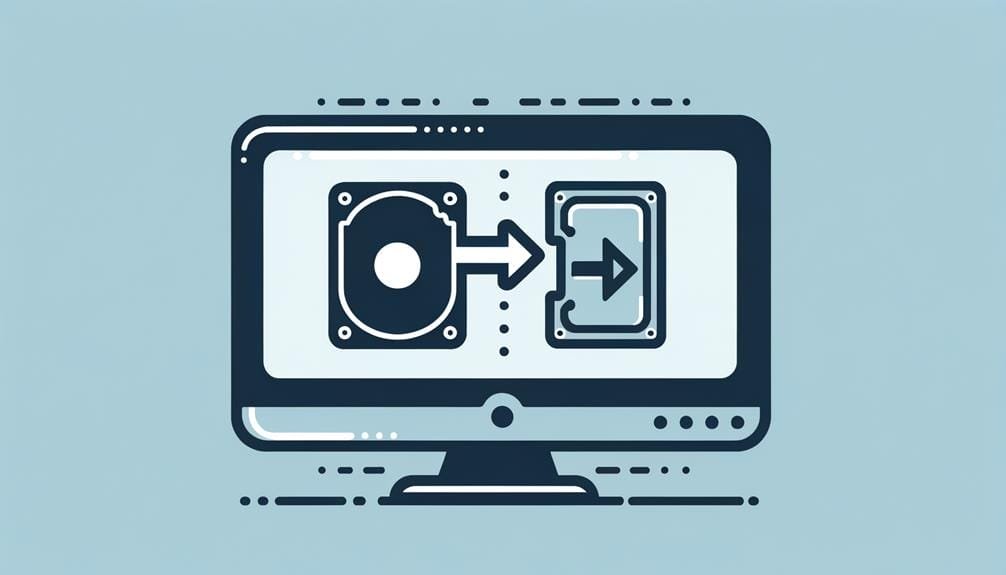Our Newsletter
Sign up for our e-mail newsletter and stay informed for what’s next on the horizon.
Are you aware that SSDs perform over 300% faster than traditional HDDs? This is the reason for the considerable surge in individuals to migrate OS to a new SSD.
But, how should one tackle this task? Is it better to copy your existing OS, generate and restore a system image, or just commence anew with a new installation?
We will be examining these methods and more, so stay tuned if you’re interested in enhancing your computer’s performance.
We’ve successfully accomplished the job to migrate OS to a new SSD. Interestingly, PCMag reports that SSDs can boost system performance by an impressive 100%. That’s a substantial upgrade!
It’s clear that the effort put into this migration can truly lead to a noticeable improvement in our system’s overall performance. Keep in mind, protecting your data and maintaining your system updated is crucial.
Let’s appreciate the speed and efficiency that SSDs bring to our computing experience.
Before migrate OS to a fresh SSD, it’s critical to get your current system ready, beginning with confirming that the new SSD has enough space to handle the OS. As we proceed through this process, we’ll need to take into account the size of the OS, the data on the existing hard disk, and the capacity of the new SSD. Our goal is to dodge any constraints that could impede our ability to fully exploit the potential of the new drive.
Making room on the current system is paramount. We can use Windows Disk Cleanup, an integrated tool that finds and deletes unneeded files, carving out more space for the important data. This is particularly significant if we’re moving from a larger HDD to a smaller SSD.
But what about our data? We can’t risk losing it. Therefore, creating backups of important data is obligatory. This safeguard ensures that even if something goes awry during the migration process, we’ll still be able to access our files.
Selecting the appropriate SSD for our computer involves careful consideration of several vital aspects: size, interface compatibility, pace and efficiency, resilience, and customer feedback.

After selecting the perfect SSD, the subsequent vital step is to replicate our operating system. This involves creating an exact duplicate of our entire OS, complete with settings and files, from the old drive to the new SSD. This method, commonly known as cloning, is an effective and time-saving strategy for migrate OS to the SSD without the need for reinstalling Windows.
To begin the cloning operation, we need to employ a trustworthy cloning tool. This cloning software not only replicates our information but also optimizes the SSD for improved performance during the process. It’s important to confirm that the destination disk, which is the new SSD, possesses sufficient space to store all data from the source drive.
Post the cloning procedure, we’ll need to modify our boot settings. We designate the new SSD as the primary boot drive to move my Windows, which allows us to start utilizing the migrated OS on the SSD post OS transfer.
Now it’s time to get started with the important process of installing the new SSD, a task that involves attaching it to our computer, utilizing specific software for OS migration, and modifying our system settings. The process to transition our OS to SSD is a technological one, but we’ll walk you through each step.
Upon finishing the cloning process, we substitute the old SSD with the new one in laptops. For desktops, we modify the boot sequence in BIOS to allow the system to initiate from the new SSD. With these actions, we’ve successfully transferred our OS to the new SSD, granting us the flexibility we desire.

Upon successfully shifting our operating system to the new SSD, a number of post-migration tasks are required to guarantee top performance and protect our information. It’s necessary to confirm that all crucial data was duplicated onto the new SSD and can be accessed. Completing this step means we can be certain no vital files were lost during the migration process.
Subsequently, we must tweak the Boot Priority in the computer’s BIOS settings. Our new SSD should be set as the main boot drive, ensuring the system starts up from the SSD. This task is fundamental as it allows the SSD to operate efficiently with the support of the system.
Our old HDD can be utilized for extra storage or held as a backup. This gives us the flexibility to optimize our storage capabilities while still keeping our data safe.
Afterward, we should check for any performance enhancements. We should see a noticeable increase in speed, demonstrating the advantages of our new SSD. Finally, it’s advisable to use disk optimization tools. This makes sure our SSD is functioning at peak performance, leading to an overall improvement in our system’s performance. These steps are necessary to reap the full benefits of our new SSD.
We’ve successfully completed the task of transferring an OS to a new SSD. Intriguingly, PCMag states that SSDs can amplify system performance up to a whopping 100%. That’s a significant improvement!
It’s evident that the work invested in this transfer can genuinely result in a noticeable enhancement in our system’s overall performance. Bear in mind, safeguarding your data and keeping your system up-to-date is vital.
Let’s welcome the speed and efficiency that SSDs introduce to our computing experience.
Yes, it is possible to move your operating system to a new SSD. This is a typical upgrade method that is known to boost boot speeds and increase system efficiency. The process involves the use of specific software to clone the system, ensuring a seamless transition.
We’re directing this operation. Firstly, position the SSD in the computer. Subsequently, adjust the BIOS settings, designating the SSD as the main boot device. Detach the old HDD. Confirm BIOS boot sequence favors the SSD, then conduct a system restart.
Post the successful transition of the OS to the SSD, the next step is to set the replicated SSD as the primary boot drive. The removal of the old drive is necessary to prevent any potential issues, followed by checking the operation of the data, engaging in disk cleanup, and retaining the old drive as a backup.
We recommend utilizing a cloning tool to duplicate your boot drive. Make sure the new SSD has sufficient space. Once done, designate the new SSD as the main boot drive in your system’s BIOS. This is an empowering, tech-oriented step!
Sign up for our e-mail newsletter and stay informed for what’s next on the horizon.